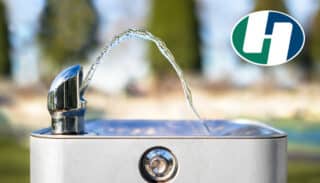From the oil industry to mining, agriculture to research, any working environment that puts employees in close proximity to occupational hazards such as potentially harmful chemicals must make workplace safety a priority. The food processing, meat packing, and poultry processing industries are no exception.
INDUSTRY RISKS
In addition to physical hazards like high noise levels, cuts, and musculoskeletal disorders, exposure to substances like ammonia, carbon dioxide and carbon monoxide can pose another risk to employees in the meat packing and food processing industries.
In March of 2016, OSHA fined a Texas-based poultry plant for allegedly allowing the release of anhydrous ammonia, a gas commonly used in significant quantities as a refrigerant across a variety of food processing facilities. This colorless gas, classified as hazardous by the OSHA Hazard Communication Standard, is known to be highly irritating, with a very sharp, suffocating odor. Immediate health effects of exposure to anhydrous ammonia include:
• Burning of the eyes, nose and throat
• Coughing and choking
• Swelling of the throat and/or chemical burns to the lungs
Prolonged exposure can lead to eye damage, severe burns, and even death.
Another OSHA violation occurred in December 2012 when a food manufacturing facility did not provide an emergency shower or eyewash in the immediate vicinity of a forklift battery charging station.
MEETING THE STANDARD
Immediate first aid for exposure to anhydrous ammonia or battery acid includes providing fresh air and immediate flushing with water for no fewer than 15 minutes. Safety data sheets for many chemicals require that eyewash stations and safety showers are close to the workstation location as a protective measure. And OSHA 29 CFR 19010.151(c) states “where employees were exposed to injurious corrosive materials, suitable facilities for quick drenching or flushing of the eyes and body.” This kind of emergency response access necessitates appropriate safety equipment and proper employee training – hallmarks of industry guidelines set forth by the American National Standards Institute (ANSI).
ANSI Z358.1 is a comprehensive guideline that outlines specific parameters for the appropriate design, installation, performance, certification, use and maintenance of emergency eyewash and shower equipment across a range of industries. Failure to comply with all aspects of ANSI Z358.1 not only puts employees at risk, it opens a facility to potential liabilities and penalties. When working with chemicals, such as anhydrous ammonia, taking preventative measures is your safest bet. By supplying the appropriate emergency eyewash and shower equipment, you’ll be able to prevent further injury as well as reduce the risk of OSHA and ANSI non-compliance.
Download this white paper to share or save>>





